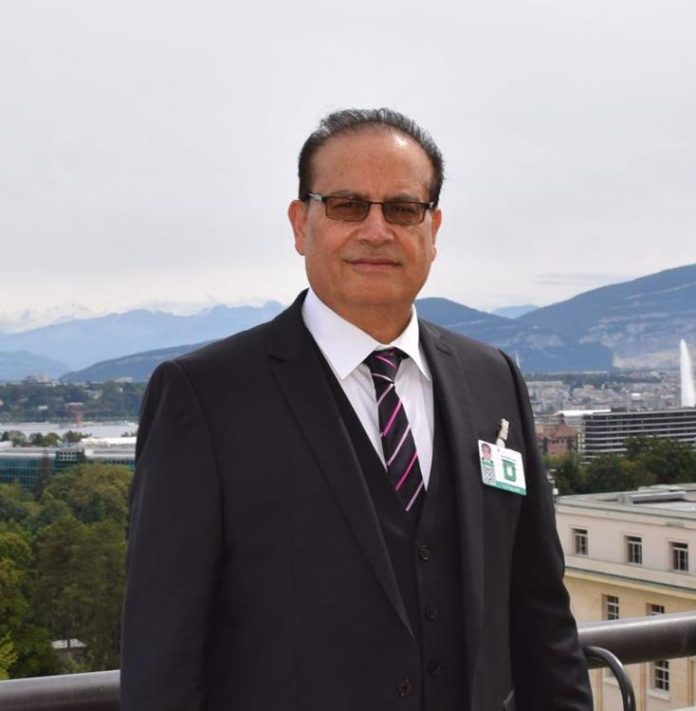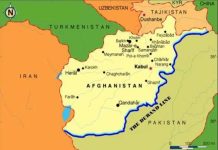By Qamar Bashir
When Crown Prince Mohammed bin Salman stepped onto the White House lawn on 18 November 2025, it was not just a long-delayed rehabilitation of a controversial leader. It was the opening scene of a transactional revolution: a Saudi-American bargain that combines hundreds of billions of dollars in investment with the transfer of the United States’ most advanced stealth fighter to a second power in the Middle East. According to a White House fact sheet, Saudi Arabia has already committed to invest some $600 billion in the United States over coming years, spanning energy, critical minerals, technology and infrastructure. As part of this week’s visit, officials say at least $20 billion of that will be channelled specifically into U.S. artificial-intelligence data centres and digital infrastructure, locking Saudi capital into the next engine of American power.
Alongside this economic flood comes hard steel. Trump has now publicly confirmed that Washington will sell F-35 Lightning II fighters to Saudi Arabia, ending Israel’s exclusive status as the only F-35 operator in the region. Riyadh has formally requested up to 48 aircraft, a “multi-billion-dollar” package that U.S. officials acknowledge will transform the regional air balance. The precise price tag is still classified, but export precedents are revealing. Australia’s F-35 programme, for example, works out to roughly $160 million per jet once training, spares, depots and support are included. Switzerland’s deal for 36 F-35As is valued at about $7.5 billion, more than $200 million per aircraft when all ancillaries are counted. On that basis, defence economists estimate that a 48-jet Saudi package, with weapons, simulators, basing works and training, could easily fall in the $10–12 billion range, and ultimately cost far more over its multi-decade life.
This mega-deal comes on top of an already staggering pipeline of U.S.–Saudi defence commerce. In May 2017, Trump’s first term began with letters of intent for $110 billion in immediate arms sales and up to $350 billion over ten years. In May this year, his second administration announced a further $142 billion defence cooperation package in Riyadh, billed as the largest in U.S. history, spreading contracts across air defence, missiles, naval security and cyber systems. Add a prospective F-35 tranche of around $10–12 billion, and Trump-era arms frameworks with Saudi Arabia edge toward $260 billion in nominal value, even before counting legacy sales and support. Not all of this will be delivered in full, but the political signal is unmistakable: Saudi Arabia is no longer just a big oil client; it is the premier customer of the U.S. defence-industrial state.
To grasp how disruptive this is, one must recall what Washington’s Middle East doctrine was really about for decades. American strategists had two core goals: keep the oil and trade arteries open, and ring-fence Israel’s security with a lattice of bases, pre-positioned stockpiles and compliant regimes. U.S. aid to Israel reflects that priority. Under a ten-year memorandum of understanding signed in 2016, Washington pledged $38 billion in military assistance between 2019 and 2028—$3.8 billion a year, including $500 million for missile defence. Cumulatively, Israel has received more than $300 billion in U.S. economic and military aid since 1948, making it the largest single recipient of American assistance anywhere in the world. Even today, Israel holds roughly $39 billion worth of active U.S. Foreign Military Sales cases, from precision munitions to missile-defence components.
That hardware has been used with devastating effect in Gaza since October 2023. After Hamas’s attack that killed some 1,200 people in Israel, the subsequent war has, according to the Gaza Health Ministry and UN-cited tallies, killed more than 69,000 Palestinians by early November 2025, with total fatalities across Gaza and Israel now exceeding 71,000. Entire neighbourhoods were levelled, famine conditions took hold, and the word “genocide” moved from activist slogans into the vocabulary of UN officials, human-rights bodies and international courts. In much of the Arab and Muslim world, this confirmed a long-held belief: that American bases in Qatar, Bahrain, Kuwait and elsewhere existed less to protect host countries than to guarantee Israel’s ability to fight, occupy and—when it chose—annex.
In that climate, the Trump–MBS summit is startling because it punctures the aura of untouchability around Israel’s military monopoly. By opening the F-35 club to Saudi Arabia, Washington is no longer treating Israel as the only trusted steward of fifth-generation air power in the region. Instead, the United States is consciously elevating Riyadh into a near-peer, even at the cost of re-arguing Israel’s “qualitative military edge” in Congress and within its own law. The Council on Foreign Relations notes that maintaining that edge has, for years, meant giving Israel the region’s first access to new platforms and then compensating it when others received high-end kit. This time, it is Israel that must watch while another capital is courted with the crown jewels.
The strategic implications are far wider than one procurement line. Saudi Arabia is already deepening security ties with Pakistan, the Muslim world’s only declared nuclear power, and has the financial capacity to buy nearly any conventional system it desires. The F-35 fleet would sit atop an ecosystem of imported missiles, air-defence networks and cyber capabilities, manned by Saudi officers but designed, trained and patched by a rotating cadre of American and allied technicians. In parallel, tens of billions in Saudi AI and tech investments will intertwine its fortunes with U.S. semiconductor fabs, data farms and software platforms. Economic leverage begins to flow in both directions: Washington sells arms and regulatory shelter; Riyadh deploys capital, energy coordination and political cover in a turbulent region.
For the Gulf publics who watched U.S. assets stand aside—or assist—during the destruction of Gaza, this shift carries another message. If the same American system that armed Israel can now empower a Saudi-led axis to say “no” to future adventures, the old equations begin to crack. Arab governments, burned by the realisation that U.S. bases were used primarily to shield Israel rather than their own cities, will be under pressure to tether any future U.S. operations tightly to their national interest. If Israel again contemplates annexation or large-scale attacks on neighbours from whose soil U.S. forces operate, they will not only face resistance from their populations but also from Gulf rulers who can now point to their own F-35 inventories and ask why they need foreign tripwires at all.
This changing geometry does not mean Israel is abandoned. Its cumulative $300-plus-billion aid record, the active $38-billion MOU and fresh wartime top-ups—at least $16.3 billion in extra military support authorised since October 2023—ensure it remains embedded in the American security machine for years to come. But it does mean that the story of a Middle East entirely scripted by Israeli preferences and enforced by American power is fraying. The Trump–MBS handshake, buttressed by the promise of $600 billion in Saudi investment and a prospective $10-plus-billion F-35 package, says plainly that Washington now prices Saudi Arabia not just as a client but as a co-author of regional order.
Critics will rightly point to the moral abyss: the Khashoggi assassination unresolved, political prisoners in Saudi jails, and an American weapons pipeline implicated in tens of thousands of Palestinian deaths. Supporters will counter that arming Saudi Arabia and tying its fortunes to advanced U.S. technology is the surest way to pull it permanently into a U.S.-led orbit and restrain more adventurist actors, from Tehran to non-state militias. Both readings may prove partly true. What is beyond dispute is that the Trump–MBS summit has fused money and metal on an unprecedented scale, producing a relationship where petrodollars, AI clusters and stealth fighters are all strands of the same rope.
For decades, Middle Eastern observers have complained that Washington was effectively “run by Israel,” its regional policy captured by a single small state with a huge lobby. This week’s choreography at the White House does not magically dissolve that perception, but it does crack it. A United States willing to put F-35s in Saudi hands, welcome $600 billion in Saudi investment, and accept some erosion of Israel’s exclusive privileges is no longer acting as a wholly owned subsidiary of anyone. It is, for better or worse, reverting to something more dangerous and more interesting: a great power juggling multiple clients, playing off rival ambitions, and gambling that this time its bet—on Mohammed bin Salman, on Saudi capital, and on a re-armed Gulf—will produce stability rather than another cycle of catastrophe.
By Qamar Bashir
Press Secretary to the President (Rtd)
Former Press Minister, Embassy of Pakistan to France
Former Press Attaché to Malaysia
Former MD, SRBC | Macomb, Michigan, USA

















